1.2: Arabic Diacritical Marks علاماتُ التَّشكيل
- Page ID
- 151306
In this section, you will be able to:
- Learn about the Arabic Script, short vowels, and the diacritics.
Section One: Arabic Script الكتابة بالعربية
Arabic Script consists of two separate layers: the first layer is consonants, and long vowels, and the second is diacritical marks (accents). Diacritical marks are called Tashkeel in Arabic. "Tashkeel" are the marks used as phonetic guides, including the short vowels and the grammatical markers, however they are not included in handwriting. The Arabic language has a one-to-one correspondence between sounds and letters. The Arabic written system is regularly phonetic, which means the words are generally written as they are pronounced. Arabic letters are connected letters and each letter has two connectors, this means the letter can be connected to preceded and followed letters in the same word. However, there are six letters that have one connector from the right side, and can't be connected from the left side. Arabic letters are connected except 6 letters which are only joined with the preceding letter: ا د ذ ر ز و
The letter ب is a two side connector letter. Notice how the letter ب is written in the next four words using the four shapes, and how it is connected to the previous, and followed letters.
بابٌ - بَيْتٌ - يبِـيع - شَيْبُ
The letter د is a one-side connector letter. Watch the letter د is written in the four words using the four shapes, and how it is connected to the previous letter and disconnected from the following letter in the same word.
دُبٌّ - بَدْر - سَدُ- دود
Section Two: Diacritics التَّشكيل
Short Vowels الحركات
There are three short vowels in Arabic, the length of these short vowels corresponds to the length of most English vowels. Short vowels are indicated in the Arabic Script by symbols written above or below the consonant and dots.
Fatah's sound is "a" and it comes above the letter.
Dhama's sound is "u" and it comes above the letter.
Kasra's sound is "e" and it comes under the letter.
Example: بِ ، بُ ، بَ
Watch the video and listen to the sound of the letters with short vowels: Fatha, Dhama, and Kasra
The absence of the short vowels "Sukoon" السكون
The word "Sukoon" means quiet, silence in Arabic. Linguistically the concept of "Sukoon" is the absence of a short vowel following the consonant. Also, Arabs use "Sukoon" at the end of the words in spoken Arabic. You should know that no Arabic word starts with "Sukoon", and a new syllable begins after it. The shape of "Sukoon" is a small circle. Also, for your information, the letters that carry "Sukoon" should take longer to pronounce.
The Marker of "Shadda"الشدة
"Shadda" is an Arabic word, and it means strength. "Shadda" is one of the diacritical marks, and it doubles the consonant it is written on. The first consonant has no vowel, and the second carries one of the diacritical marks except "Sukoon." The technique of pronouncing the consonant with "Shadda" is to stress it like stressing the letter T in the English word "Skittle" and stressing the letter Z in the word "Sizzle." "Shadda" can carry the short vowels and Tanween. The shape of "Shadda" is a small w above the letter.
Tanween
Tanween function is like the article "a" or "an" in English which indicates the indefinite article. However, "Tanween" can accompany singular and plural nouns in Arabic because it is the sign of the indefinite article. "Tanween" sign is double of the same short vowel, and it always comes at the end of the nouns only. Verbs do not take tanween.
There are three types of "Tanween." "Tanween" Fateh, Dhama and Kasrah. "Tanween" indicates the indefinite statute of the word, like using the article "a" or "an" for nouns. "Tanween" Fateh needs support, so it always uses an Alif when it comes at the end of the noun, Tanween Dhamah does not need a support, and Tanween Kasrah comes under the letter. Also, the "Tanween" is the sound of the short vowels, and the letter "N" is added to the end of the word after the vowel.
Listen to the audio to hear the sound of the Tanween.
Tanween Fateh تنوين الفتح
Tanween Dhama تنوين الضم
Tanween Kasra تنوين الكسر
| Short Vowel (الحركة) | Shape | Sound |
|---|---|---|
| Fataha | 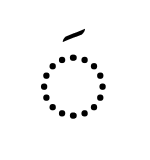 |
|
| Dhama |  |
|
| Kasra | 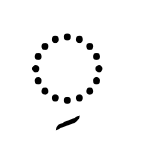 |
|
| Sukoon | 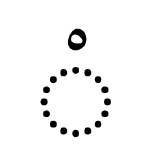 |
|
| Shadda |  |
|
| Tanween Fateh | 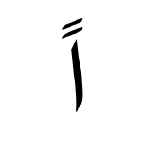 |
|
| Tanween Dhama | 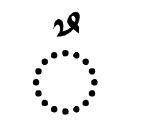 |
|
| Tanween Kasra | 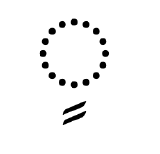 |
Example: You will see the letters م ، ل ، ع using them in the same order, but using different diacritical marks.
Example: You will see the letters م ، ل ، ع using them in the same order, but using different diacritical marks. You can see the colored diacritical marks in the picture below.
|
1. عُلِمَ |
2. عُلِمْ |
3. عَلَمٍ |
|
4. عَلِمَ |
5. عَلَماً |
6. عَلَمٌ |
|
7. عُلِّمَ |
8. عَلـَّمَ |
9. عِلْمُ |
|
10. عِلْمٌ |
11. عِلْماً |
12. عِلْمٍ |
Watch the video and listen to the pronunciation of the words in orders from 1 to 12 in the audio below.

